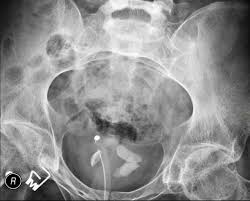Vasectomy reversal offers a pathway for men to restore fertility following a vasectomy. This medical procedure reconnects the vas deferens, the tubes responsible for carrying sperm, to enable the possibility of pregnancy. For couples thinking about parenthood after a vasectomy, understanding the procedure and its implications is key. Here is an overview of how vasectomy reversal works, its potential success rates, and factors to weigh when deciding on this option:
Understanding Vasectomy Reversal
Vasectomy reversal is a surgical procedure performed by a urologist to re-establish the connection of the vas deferens. Using specialized microsurgical techniques, the surgeon removes any scar tissue from the previous vasectomy and reconnects the severed ends of the vas deferens. This allows sperm to travel from the testes into the semen again.
There are two methods of performing this surgery based on the condition of the vas deferens and the presence of sperm during the procedure. A vasovasostomy involves joining the two ends of the vas deferens directly. The second, vasoepididymostomy, connects the vas deferens to the epididymis when blockages are identified. The surgeon chooses the method based on intraoperative findings, and both require precision due to the small size of the tubes.
Exploring Factors That Influence Success
Success rates of reversal hinge on several medical and personal factors. One of the most influential elements is the time elapsed since the vasectomy. Generally, procedures performed within ten years yield higher pregnancy rates, as prolonged intervals may lead to scarring or secondary blockages.
A surgeon’s expertise in microsurgical techniques is key to successful outcomes. Specialists in vasectomy reversal use advanced microscopes and fine sutures to perform delicate reconnections. The presence of healthy and viable sperm during the procedure also significantly impacts the chances of natural conception. It is also worth noting that the overall reproductive health of both partners plays a role. Male patients with additional reproductive issues or partners with certain fertility challenges may require further evaluation or assistance.
Identifying Potential Risks and Recovery
Like any surgical procedure, vasectomy reversal carries some risks. Complications such as infection, bleeding, or fluid buildup at the surgical site may occur, though these are typically rare. This procedure is generally performed as an outpatient surgery under local or general anesthesia, with most patients returning home the same day.
Recovery times typically range from two to three weeks, and patients are advised to limit strenuous activity or heavy lifting during this period. Abstaining from ejaculation for several weeks allows the surgical site to heal fully. Follow-up evaluations are scheduled to assess semen analysis. This confirms the presence of sperm in the semen and monitors the overall recovery progress.
Learn More About a Vasectomy
Vasectomy reversal is a viable solution for restoring fertility after a vasectomy. The procedure involves reconnecting the vas deferens using advanced surgical techniques, with success influenced by the time since the initial vasectomy, the surgeon’s expertise, and overall reproductive health. While risks exist, the procedure offers an effective option for men seeking to regain fertility. To explore vasectomy reversal further or discuss fertility restoration in more depth, schedule a consultation with a qualified specialist.

